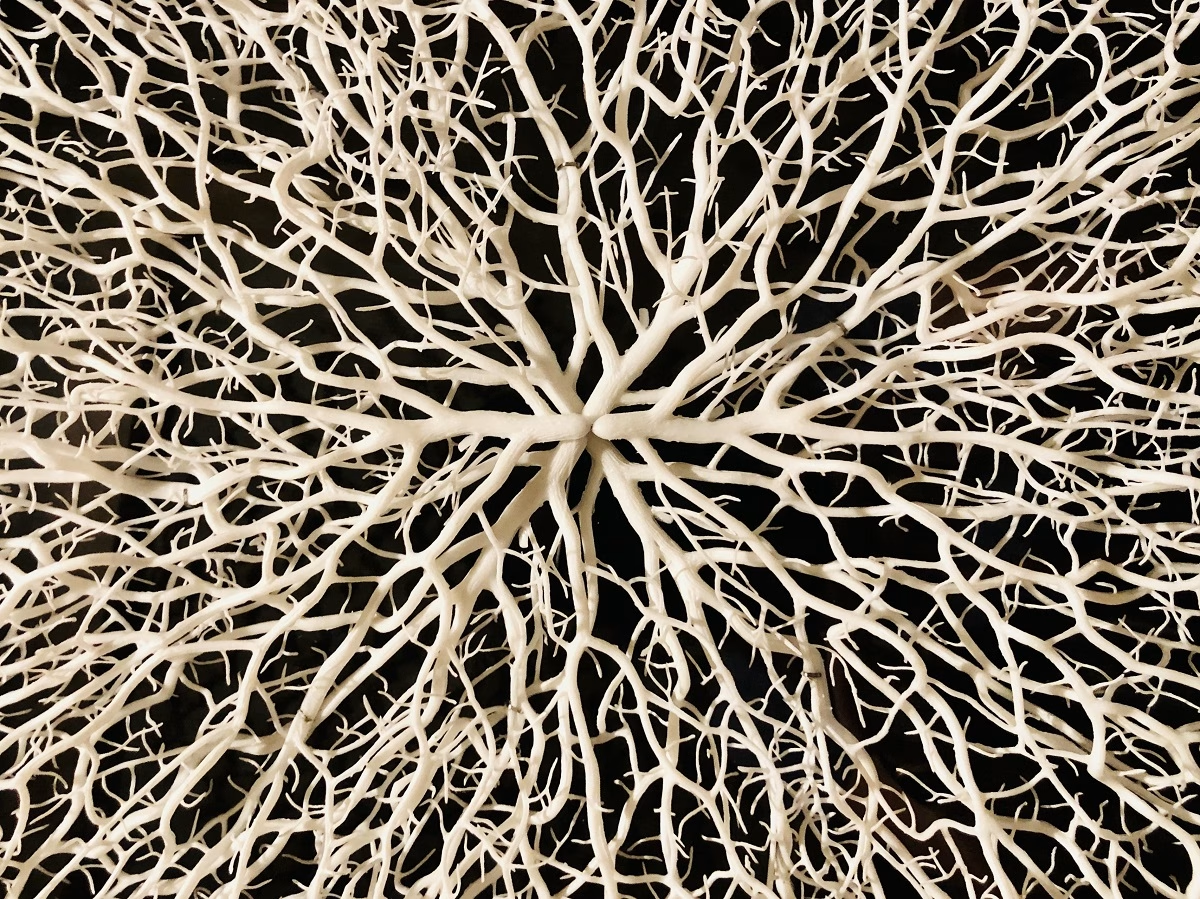A subdivision of the peripheral nervous system that includes all the nervous system except the brain and spinal cord is called the somatic nervous system. These nerves help move and control muscles. Moreover, it is also responsible for sending signals from the four senses to the brain. These include smell, sound, taste, and touch.
Function
This part of the nervous system has two primary jobs. For example:
- Sensory input – Almost all of the senses go through the somatic nervous system to reach the brain. The exception is the optic nerve because it is directly connected to the brain. However, the signals from the sense of touch first go from the neck to the spinal cord through the somatic nervous system. Thereafter, it is relayed to the brain.
- Movement control – The signals that help control the muscles throughout the body also travel through the somatic nervous system to the brain.
Furthermore, the somatic nervous system also helps indicate organ pain using “referred pain”. For instance, it occurs when you feel pain in the left arm, back, jaw, or abdomen that comes from a heart attack. Another example of how this part of the nervous system affects the internal organs is breathing control. While we are usually breathing automatically without thinking about it, we can breathe manually, controlling when to inhale and exhale.
Anatomy
This part of the nervous system spreads outward from the brain and spinal cord throughout the body. In the neck and head, it goes through cranial nerves. In general, there are 12 pairs of nerves, which are labeled with Roman numerals to set them apart. However, only 11 of them have connections and are a part of the somatic nervous system. The cranial nerve II, which links the eyes with the brain, is a part of the brain and not of the somatic part of the nervous system.
Thereafter, the somatic nervous system has connections to all 31 spinal nerves and then spreads throughout the body. While some nerves are sensory that send signals up to the brain only, others are motor that send information one way from the brain to the muscles.
Moreover, the spinal and cranial nerves still branch outward as smaller nerves throughout the body. The ends of these nerves are in the tips of the fingers and toes or underneath the skin.
In addition, the somatic nervous system looks very similar to an upside-down tree with the brain as the root. The spinal cord looks like the tree’s trunk.
What is The Somatic Nervous System Made of?
This part of the peripheral nervous system consists of multiple types of nerve cells and structures. Check below some examples:
- Neurons – These are nerve cells that convert signals into chemicals or electrical forms.
- Glial cells – Specific cells in the nervous system that send or relay nervous system signals, and help neurons that do so are known as glial cells.
- Nuclei – These are clusters of nerve cells that do the same job or make connections.
- Ganglia – Large groups of nerve cells (a ganglion). For example cochlear and vestibular ganglia are a part of the sense of hearing and balance.
Neurons
Specific cells that only happen in the nervous system are called neurons. They help send and relay signals throughout the body. Moreover, these signals are converted into electrical or chemical forms, which helps them communicate with each other. Check parts of the neuron below:
- Cell body – This is the primary part of the neuron, and it sends signals throughout multiple structures that extend outward from it.
- Axon – Neurons also have axons, which are long extensions that reach outward from the cell body. The end of an axon has multiple finger-like extensions that help convert electrical signals to chemical signals. These structures are also known as synapses that convey those chemical signals to the nerve cells.
- Dendrites – Small branch-like extensions that stick out of the cell body. These dendrites receive chemical signals sent out from synapses or other neurons.
- Myelin – This is a protective layer that consists of a thin and fatty layer that surrounds an axon. Myelin also helps speed up some signals when they travel through a neuron.
In general, neurons are very complex. Moreover, one neuron may sometimes connect to thousands of others. Additionally, neurons may have different lengths depending on their location.
Glial Cells
This part of the somatic nervous system has multiple purposes. It helps develop and maintain neurons when you are young and manages how the neurons do their job for the whole life. Moreover, glial cells protect the nervous system from infections, control chemical balance, and produce a myelin coating on the neurons’ axons. However, glial cells outnumber neurons 10 times.
Health Conditions
As the somatic nervous system is a part of the peripheral nervous system (all nerves in the body except those of the brain and spinal cord), it is more likely to develop disorders that cause peripheral neuropathy. It means conditions that cause damage to the peripheral nervous system. Check below the most common conditions:
- Type 2 diabetes – If you have this condition and do not get treatment, it may cause damage to the somatic nervous system, especially in the legs and feet. That’s why people with type 2 diabetes are at increased risk of losing feeling in the lower limbs. Furthermore, this condition is one of the most common causes of peripheral neuropathy.
- Autoimmune and inflammatory disorders – For example, Guillain-Barré syndrome, rheumatoid arthritis, systemic lupus erythematosus, amyloidosis, vasculitis, Charcot-Marie-Tooth disease, and others.
- Hansen’s disease (also called leprosy) – While it occurs very rarely, the effects of this disorder may cause damage to the somatic nerves.
- Congenital and genetic diseases – These conditions are problems that are present at birth. However, genetic disorders are often inherited from biological parents during pregnancy.
- Infections – There are some viral and bacterial infections that may cause damage to the somatic nerves. Examples include HIV infection, Lyme disease, shingles, and others.
- Certain medicines and procedures – These include antibiotics, chemotherapy drugs, surgery, and others.
- Poisons and toxins – If you are exposed to heavy metals (such as Mercury or Lead) for prolonged periods, it may lead to damage to the nervous tissue. As a result, you may experience sensations or muscle problems.
- Trauma – Sometimes, people develop peripheral neuropathy due to swelling caused by an injury. One nerve compression disorder is carpal tunnel syndrome.
- Tumors – There are malignant (cancerous) and benign (noncancerous) tumors that disrupt the somatic nervous system. Therefore, you may experience symptoms such as loss of muscle control.
Symptoms
Usually, people experience different symptoms because it depends on the type of nerves that are affected. Check below some examples:
Motor Nerve Damage
- Shrinking of muscles
- Loss of muscle control
- Muscle cramps, spasms, tremors, or twitches
Sensory Nerve Damage
- Loss of touch sensations – This symptom makes you lose the ability to feel. Moreover, it also negatively affects the nerve transmission of temperature or vibration.
- Paresthesia (numbness or tingling) – This is another way to describe “pins and needles” feelings that often occur in the arms or legs.
- Neuropathic pain – When it occurs, you may experience a sharp or burning pain around the affected region. It often occurs due to damaged nerves. Sometimes, the pain can be severe enough to interfere with your restful sleep or daily activities.
Diagnosis
First, doctors will perform a physical examination to determine whether you have peripheral neuropathy or not. Thereafter, they may also ask some questions about the symptoms and medical history. Check below some common tests often used to diagnose peripheral neuropathy:
- Blood tests – These tests are often performed to check the immune system problems to toxins and poisons.
- Electroencephalogram (EEG)
- Electromyogram (also called nerve conduction test)
- Genetic testing – This test helps identify congenital disorders that you may inherit from your biological parents.
- MRI (magnetic resonance imaging)
Treatment
Usually, doctors prescribe different treatments for people with peripheral neuropathy. It depends on the underlying condition, the severity and type of nerves affected, age, overall health, and preferences. Check below some treatments often recommended by doctors:
- Medicines – Physicians often prescribe pain relievers and muscle relaxers.
- Surgery – This procedure is recommended to decompress a nerve trapped by surrounding tissue or swelling.
- Transcutaneous electrical nerve stimulation – During this procedure, doctors will deliver a mild electrical current to the damaged nerves.
- Nerve ablation – This treatment is used to damage specific nerves to relieve severe or chronic pain.
- Physical therapy – During this therapy, you will learn specific exercises that help you recover faster from injuries or other treatments.
- Acupuncture – Physicians often prescribe this treatment when pain relievers or other medicines do not work. It involves multiple small needles that are inserted in specific areas of the body.
- Devices and wearable equipment – For example, braces, canes, prescribed footwear, and others. These help adapt to changes in the body.
Is There a Way to Prevent Somatic Nervous System Disorders?
It is not always possible to prevent these conditions, but you can take some steps to reduce the risk. Check below some examples:
- Adopt a balanced diet – It is important to know that vitamin deficiencies (especially vitamin B12) may cause damage to the nervous system. You should also not take too much vitamin B6 because it becomes toxic.
- Perform physical exercise regularly – It is advised to aim for at least 30 minutes of physical activity per day, at least 5 days a week. It helps maintain a healthy weight and prevent or delay the onset of type 2 diabetes.
- Wear safety equipment – Trauma and injuries are a common cause of nerve damage. Hence, you should consider protective equipment, especially when participating in contact sports.
- Manage chronic health conditions – These include hypertension (high blood pressure), type 2 diabetes, and others.
Frequently Asked Questions
What does the somatic nervous system do?
This part of the peripheral nervous system controls voluntary movements of skeletal muscles, sends sensory information from the body to the central nervous system (the brain and spinal cord), and carries information about touch, pain, temperature, and body position.
What happens if the somatic nervous system is damaged?
If your somatic nervous system is damaged, it may lead to multiple health problems. First, you will notice sensory and muscle movement problems.
What is the difference between the autonomic and somatic nervous systems?
While both are major subdivisions of the peripheral nervous system, the somatic nerves mostly control voluntary movements, but the autonomic nerves control involuntary movements. For example, the somatic nerves are responsible for walking, lifting a cup, and others, but the autonomic nerves control heart rate, digestion, and breathing. Ask your healthcare provider if you have additional questions.




